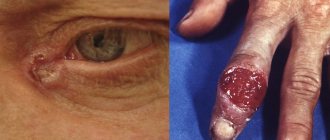Scientific and technological progress has brought many useful things into our lives and has largely freed us from hard physical labor. But he also awarded the person with many serious problems. These are hypokinesia, physical inactivity, chronic fatigue syndrome, stress. According to experts, insufficient physical activity today has become the scourge of civilization and a factor contributing to general degradation. The statistics are inexorable: physical inactivity and hypokinesia take leading positions in the ranking of causes that cause obesity, coronary heart disease, myocardial infarction, and atherosclerosis.
Life on the move
Between 25 and 40 percent of our body weight is muscle. And the ancient Greek scientist Hippocrates called physical activity “food for life.” The key to the normal functioning of all organs and systems of our body is the active work of all muscles. Man as a biological system is created for active activity.
But our age of rapid technology and information space increasingly takes up our time and leaves no opportunity for the development of muscle activity. The concept of “hypodynamia” (from the Greek words hypo - “below”, “under” and dynamikos - “strong”) is known to everyone today. It means a decrease in physical activity. Along with it, a term is often used that characterizes a general decrease in the tempo and range of movements. This is hypokinesia (from the Greek words hypo - “from below” and kinesis - “movement”). And if the first concept refers to a general decrease in activity, then hypokinesia is characterized by a decrease in the amplitude and strength of movements.
Thus, hypokinesia, like physical inactivity, has a complex effect on our body, leading to decreased performance, fatigue, nervousness, headaches and insomnia.
Hypokinesia and its consequences
The problem of preventing the development of hypokinesia and physical inactivity is of great importance for health. This is due to a deep restructuring of the micro and macrofunctional structures of the human body as a biosystem, and a reduced level of nutritional activity has a complex effect on the human body.
Scientists have found that a decrease in the volume of muscle activity accelerates the aging process of the body, leads to an increase in cardiovascular diseases, the occurrence of digestive disorders, and a decrease in the body’s resistance to various infections.
Hypokinesia and its consequences are the subject of many studies, since the variety of causes of movement deficits, the degree of its severity and duration contribute to the emergence of a fairly wide range of complications in the body - from minor adaptation-physiological to pathological.
If in ordinary life such physiological changes are not always noticeable, then in extreme conditions, when there is a need to mobilize the body’s reserve capabilities, the consequences of hypokinesia appear more obvious.
A decrease in motor activity is primarily reflected in the muscular system, gradually involving all the main systems of the body. Hypokinesia and physical inactivity lead to atrophic muscle changes, general physical detraining, disorders of the cardiovascular system, decreased orthostatic stability, changes in water-salt balance, and bone demineralization. Hypokinesia leads to:
- Reduced functional activity of organs and systems;
- Deterioration of oxygen supply to tissues and the intensity of metabolic processes;
- Decrease in vital capacity of the lungs and intensity of gas exchange;
- A decrease in the force of heart contractions, which is associated with a decrease in venous return to the atria;
- Reduction of cardiac output and mass;
- Deterioration of resistance to various adverse factors;
- Impaired coordination of movements.
The muscles of an anti-gravity nature (neck, back) are considered to be the most resistant to the development of signs of hypokinesia. The abdominal muscles atrophy most quickly, which negatively affects blood circulation, breathing and digestion.
Disappointing statistics
According to information from the All-Russian Research Institute of Physical Culture, about 70% of adult Russians do not engage in physical education. Signs of hypokinesia are observed in 50-80% of schoolchildren. Approximately 90% of Russian students are characterized by low physical activity, and every fifth student has signs of deep hypokinesia.
General indicators of physical performance of the Russian population are declining. And this indicates the prevalence of the main diseases of modern civilization in the country.
Physiological reasons for the development of hypokinesia
This condition, which is characterized by a decrease in strength and range of motion, can be both physiological and behavioral.
Physiological reasons may be related to:
- genetic factors and developmental abnormalities;
- neurological or mental disorders;
- parkinsonism;
- extrapyramidal syndrome.
Often physiological hypokinesia occurs against the background of depressive, catatonic or apathetic stupor.
Other reasons
Among the behavioral factors, the following types of hypokinesia are distinguished:
- Habitual everyday hypokinesia. This is a type of disorder that is caused by addiction to a sedentary lifestyle, reduced motor initiative and neglect of physical education.
- Occupational hypokinesia is typical for workers whose specific activities are associated with the restriction or monotony of work. Programmers, accountants, and economists are at risk.
- School hypokinesia is caused by improper organization of the educational process (overload with homework, ignoring physical education). This type of movement disorder is becoming increasingly widespread.
- Climatogeographic hypokinesia is associated with climatic or geographical conditions that limit physical activity.
- The clinical type is associated with diseases of the musculoskeletal system, illnesses, injuries, in which the patient remains in bed for a long time.
Hypokinesis of individual organs
In addition, a decrease in strength and range of motion can also be observed with hypokinesia of individual organs, the normal functioning of which is associated with muscle activity.
Everyone knows that the myocardium is the thickest muscular layer of the heart, which contracts in a strictly specified rhythm. If myocardial cells receive insufficient nutrition, they lose the ability to contract in the same way as neighboring areas. If these cells still contract somehow, then experts talk, for example, about hypokinesia of the left ventricle or interventricular septum. However, if this part of the heart does not contract at all, then they speak of myocardial akinesia.
Another example: hypokinesia of the gallbladder. In this case, disturbances in the activity of this organ are associated with the work and tone of the sphincters, which are relaxed, so bile either slowly flows out of the ducts (hypotonic type) or does not enter the duodenum at all (hypertonic type).
Associations
Cognitive impairment
Bradykinesia has been shown to precede impairments in executive function, working memory, and attention.[11][31] These cognitive impairments may be associated with dysfunction of the basal ganglia and prefrontal cortex, which is also associated with motor dysfunction hypokinesia.[11] Tremor and rigidity have no apparent association with cognitive impairment, supporting the idea that they are not as involved in the dopamine pathway in the basal ganglia-thalamocortical loop.[11][12] Dopaminergic treatments have shown improvements in cognitive functions associated with hypokinesia, suggesting that they are also dependent on the level of dopamine in the system.[31]
Motor motivation
It is often debated whether the efficiency, strength, and speed of movements in patients with hypokinesia are related to motivation for reward and against incentives for punishment. The basal ganglia were associated with movement stimuli, suggesting that the cost-benefit analysis of planned movement may be affected in hypokinesia. Reward has not been shown to change aspects of movement in a hypokinetic individual.[32] In fact, the motor planning and control of the hypokinesic patient is already as efficient as it can be (as evidenced by slightly faster but generally the same movement after deep brain stimulation of the subthalamic nucleus).[33] This suggests that hypokinetic people simply have a narrower range of motion that does not increase relative to motivation.[32][34]
Other studies have reached the same conclusion regarding rewards and hypokinesia, but have shown that aversive stimuli can actually reduce hypokinesia. Dopamine is either less involved or plays a more complex role in the response to punishment than to reward because the hypodopaminergic striatum allows more movement in response to aversive stimuli.[35]
Demographic differentiation
Floor
Typically, men are more likely than women to develop hypokinesia, which is reflected in young and middle-aged populations, where women have higher levels of nigrostriatal dopamine than men. However, in older people there is no such differentiation. As a rule, women experience stronger tremor at the beginning of the development of hypokinesia. In this disorder, men tend to exhibit more rigidity and women tend to exhibit more bradykinetic motor behavior.[36]
Age of onset
Hypokinesia occurs in the brain and differs slightly in appearance depending on when the person is first affected. In young-onset hypokinesia (<45 years of age), cell loss in the substantia nigra is usually slightly greater and more pronounced. dystonia and muscle stiffness. With long-term onset hypokinesia (over 70 years of age), there is usually a more hypokinetic gait, difficulty walking, and no dystonia. Both onsets can display tremor at rest, although it is more common in older cases.[37]
Symptoms
Stress causes changes in cerebral circulation, increasing blood flow in the supramarginal gyrus and angular gyrus of the parietal lobe, the frontal lobe, and the superior temporal gyrus of the left hemisphere. There is also an increase in cardiac activity and a change in the tone of the heart vessels, which is an elementary sign of the development of stress. In patients with normal stress, the adaptive fight or flight response is usually triggered by sympathetic nervous system activation. Patients with hypokinesia regularly experience these typical stress symptoms due to damage to the basal ganglia system. Consequently, when a victim of hypokinesia is under stress, he or she does not exhibit the typical fight-or-flight response, exposing the patient to greater danger from potentially harmful stimuli.[38] Low-impact exercise, avoidance of drugs and alcohol, and regular meditation may help restore normal stress responses in patients with hypokinesia.[39]
What does hypokinesia lead to?
Whatever the reasons, such a movement disorder leads to the following polymorphic conditions:
- Fat metabolism is disrupted, which leads to an increase in cholesterol levels in the blood.
- Hypokinesia is accompanied by a decrease in protein synthesis, while their breakdown increases.
- Atherosclerosis develops.
- Muscles atrophy and bones decalcify (so-called calcium leaching occurs).
- The water-electrolyte balance of biological fluids is disrupted.
- Endocrine disorders occur.
- Hypokinesia is accompanied by a decrease in the overall immunity of the body.
- Libido is impaired (potency in men, anorgasmia in women).
- The overall tone of the cerebral cortex decreases.
- Hypokinesia is accompanied by an increase in appetite, which leads to overweight and obesity.
- Sleep is disturbed, the emotional state becomes unstable.
- Asthenic syndrome and neurasthenia develop.
The degree of such a disorder is determined based on a person’s energy expenditure and muscle activity in a certain period of time. The degree of hypokinesia varies - from slight to complete loss of motor activity. Based on the form of the disorders, akinesia (limitation of amplitude and range of movements) and bradykinesia (predominance of slow movements) are distinguished.
Treatment of hypokinesia
A sedentary lifestyle is an unnatural state for humans. Hypokinesia and physical inactivity are especially dangerous when combined with excess nutrition. This can lead to obesity and related complications.
Almost all studies confirm that physical activity is a natural stimulant of various vital functions of the body. Therefore, treatment of hypokinesia is the prevention of the development of life-threatening disorders.
Since lack of physical activity is quite often caused by lifestyle, first of all, you should think about the motivation to change it. The first step to overcoming hypokinesia is considered to be regular morning exercises. This is a good way to tone up before the work day and the simplest method of increasing physical activity. In the morning complex, you can use various exercises, maintaining the correct sequence:
- Walking and stretching;
- Exercises for the arms and shoulder girdle, abdominal muscles, torso and legs;
- Strength exercises;
- Relaxation exercises;
- Walking, running and breathing exercises.
Walking is good for treating hypokinesia. It is believed that 10,000 steps a day provide the minimum necessary physical activity for a healthy person. You should also try not to use the elevator, and devote your weekends to active recreation.
The effect of hypokinesia on the body
Of course, not all symptoms appear immediately, but the negative impact affects the functions of all internal organs.
The consequences of hypokinesia include:
- general deterioration of human health;
- disruption of the cardiovascular system;
- decreased ventilation;
- stagnation of blood in blood vessels.
Externally, all this manifests itself in swelling of various parts of the body, disruption of the gastrointestinal tract. The amount of joint fluid decreases, and the joints themselves lose their mobility, muscle mass decreases, and bones become brittle.
Just six weeks of bed rest in well-trained and healthy student volunteers resulted in:
- decreased myocardial strength;
- reduction in muscle mass;
- weakening of sexual desire and memory;
- decreased amount of calcium in bones;
- decreased blood volume;
- slowing down reactions;
- lethargy and apathy.
The treatment is complex but simple
If the degree of development of hypokinetic manifestations is low, it is usually sufficient to increase the level of physical activity. In severe cases, it is first necessary to eliminate the causes that led to the appearance of hypokinesia.
Some cases require drug therapy. Administration of neurotransmitters that improve neuromuscular transmission will help improve muscle tone.
Patients with Parkinson's disease in the early stages are prescribed dopaminergic drugs.
Treatment of conditions such as hypokinesia is possible only with complex therapy, which includes physical therapy and pharmacological drugs.
Content
- 1 Spectrum of violations
- 2 Reasons
- 3 Pathophysiology 3.1 Associated neurotransmitters
- 3.2 Neuroscience
- 4.1 Dopaminergic drugs
- 5.1 Cognitive impairment
Preventing the development of the disorder
Preventive measures are based on following the rules of a healthy diet and regular physical activity. It is recommended to take walks and engage in acceptable sports. You don’t have to use an elevator, get to work on foot, etc. All this will have a beneficial effect on the body.
It is important for people with sedentary jobs to take breaks and do at least a minimal warm-up. You should carefully consider improving your workplace, for example, purchasing a chair with a fixed back.
And a few more facts
Numerous studies in this area have confirmed the following data:
- With 49-day hypokinesia in people, there is a significant increase in the concentration of lactic acid in the body tissues and blood.
- After 40 days of limited mobility, athletes experience disturbances in atrioventricular conduction of the heart, shifts in left ventricular systole and a drop in stroke volume.
- With prolonged hypokinesia, the human heart decreases in size, especially its left ventricle.
Thus, maintaining an active lifestyle is essential to maintain health.
Pathophysiology
Associated neurotransmitters
Dopamine
The main neurotransmitter involved in hypokinesia is thought to be dopamine.[11][12] Important to the basal ganglion-thalamocortical loop, which processes motor function, dopamine depletion is common in these regions in patients with hypokinesis.[12] Bradykinesia correlates with lateralized dopaminergic depletion in the substantia nigra.[12] The dopamine pathway in the substantia nigra is important for motor function, and usually lesions in this region correlate with manifest hypokinesia.[12][13] However, tremors and rigidity appear to be only partially related to dopamine deficiency in the substantia nigra, suggesting that other processes are also involved in motor control.[12] Treatment for hypokinesia often attempts to prevent the degradation of dopamine by MAO-B or to increase the amount of the neurotransmitter present in the system.[12][13]
GABA and glutamate
The inhibitory neurotransmitter GABA and the excitatory glutamate are found in many parts of the central nervous system, including in the motor pathways that cause hypokinesia. In one pathway, glutamate in the substantia nigra causes the release of GABA into the thalamus, which then inhibits the release of glutamate in the cerebral cortex and thereby reduces motor activity. If the substantia nigra initially contains too much glutamate, then as a result of the interaction with GABA in the thalamus and glutamate in the cerebral cortex, movements will be reduced or not occur at all.[14]
Another direct pathway from the basal ganglia sends GABA inhibition messages to the globus pallidus and substantia nigra, which then sends GABA to the thalamus. Indirectly, the basal ganglia send GABA to the globus pallidus, which then sends it to the subthalamic nucleus, which then disinhibits it, sending glutamate to the output structures of the basal ganglia. Inhibition of GABA release may disrupt the feedback loop to the basal ganglia and cause hypokinetic movements.[15]
GABA and glutamate often interact with each other and with dopamine directly. In the basal ganglia, the nigrostriatal pathway is where GABA and dopamine are housed in the same neurons and released together.[16]
Neurobiology
Hypokinetic symptoms occur due to damage to the basal ganglia, which play a role in generating force and calculating the force required for movement.[17] Two possible nerve pathways allow the basal ganglia to produce movement. When activated, the direct pathway sends sensory and motor information from the cerebral cortex to the first structure of the basal ganglia, the putamen. This information directly suppresses the internal globus pallidus and allows it to move freely. An indirect pathway passing through the putamen, external globus pallidus and subthalamic nucleus activates the internal threshold of the globus pallidus and inhibits its thalamus from communicating with the motor cortex, causing hypokinetic symptoms.[17]
Basal ganglia (red) and associated structures (blue)
When dopamine levels decrease, the normal wave pattern of basal ganglia neural oscillations changes and the tendency to oscillate increases, especially in the beta wave of the basal ganglia.[18] Recent research suggests that when oscillations occur simultaneously, signal processing is disrupted in the thalamus and cortex, affecting activities such as motor planning and sequential learning, and causing hypokinetic tremor.[17]










